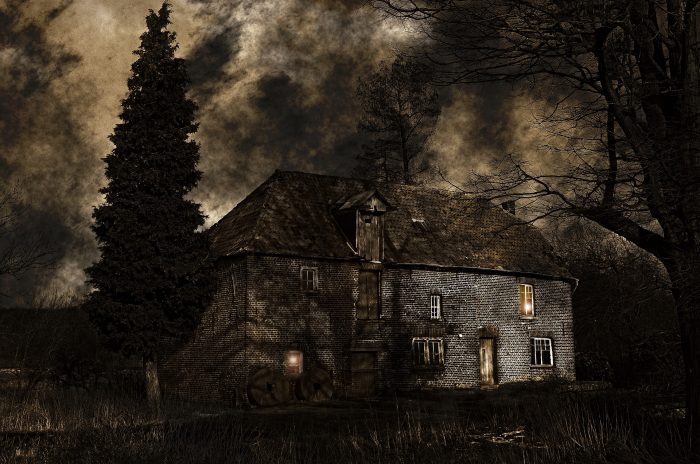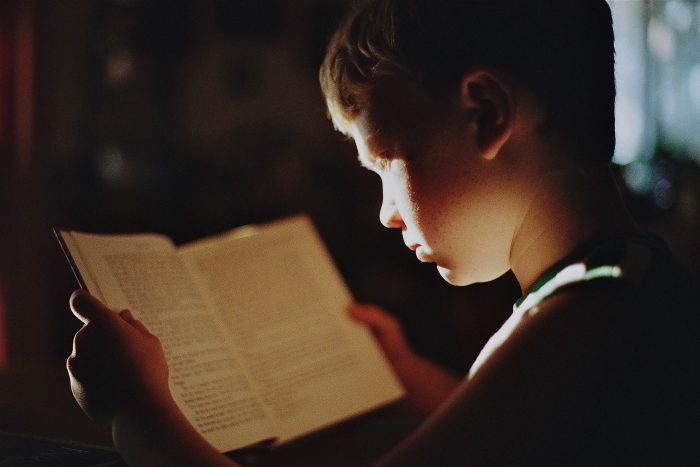Scary stories can be a vaccine for young readers
As a child I was easily spooked. When I was seven we moved into a rundown Victorian house in London. We fell through floorboards and screamed at cellar rats; the back garden was thick with child-eating weeds. The last occupant, an elderly woman, had died in one of the bedrooms. My brother and I spun the tale for new friends on the street: we said she hadn’t been discovered for days, that she was bitter after a hard life and that her spirit remained with us at number thirty-five.

I see it now as a natural coping mechanism: filling in the details, creating fiction in order to cope with the reality of a stranger’s death in our new bedroom. When it came to death, we were inexperienced. We went to Catholic school where the options at death were Up or Down. The idea that our lady-ghost was hanging around managed to be a comforting option, and one laden with intrigue. Why did she live in this big house alone? What was she bitter about? Would she stay forever or did she have a To Do list and an exit plan?
When you’re in that phase between imaginative child and cynical teen, what better way to explore questions of life and death than through the backstories of characters who are neither living nor fully departed? Looking at Australian children’s books for ages 9 to 14 published this year, there are seven novels that feature a ghost, a haunted object, or a mystery about a dead person. This seems an unusually high number. There are still more that explore death and grief without the supernatural. My novel is among the ghost trend: in a story that spans January to December 2020, The Goodbye Year is partly about a friendship between a girl in year six and the ghost of a fourteen-year-old Gallipoli soldier.
So, what accounts for the rush of supernatural stories, I wonder? Has the pandemic created an accelerated need to confront mortality? Did ghosts haunt the childhoods of these authors? More importantly, what might be in it for young readers?

Like me, as a child writer Victoria Carless was quick to embellish an unexplained presence: dark shapes in the corner of her eye, night-time grabbers lurking under her bed. But her novel Gus and the Starlight, set in a failing drive-in theatre, is not intended to terrify. Rather its message is that everyone wants to be understood and, in the author’s own words: “a human life is not enough time to be with those we love”. It’s ideal for those who are intrigued by ghosts but not up for gruesomeness.
At the spookier end is Reece Carter’s A Girl Called Corpse, about a ghost who has no memory of her life and constructs a body for herself with candlewax that she steals one drip at a time. Reece Carter began writing in 2020 and recognises that the deep loneliness and grief of that year was fuel for his ghost story. In The Deadly Daylight by Ash Harrier, the first in a mystery series, Alice England works alongside her father in a funeral home. Although she doesn’t meet any ghosts, Alice “sees” aspects of a dead person’s life by touching their possessions, and thereby arrives at the need to turn post-mortem detective.
Charles Dickens’ nanny told him terrifying bedtime stories that he could never shake. Into adulthood he remained as curious about the paranormal as he was cynical. Two of this year’s crop of ghost tales have a Dickensian feel: Sean Williams’ Honour Among Ghosts is a Victorian-era mystery sparked by a slew of crimes being blamed on the poor, while Allison Rushby’s The Ghost Locket would have been tantalisingly close to home for me as a young reader because it takes place in a haunted house in the east end of London. Early experiences of old, creaky houses were also the inspiration for The Vexatious Haunting of Lily Griffin by Paula Hayes, who remembers a particular room in her grandmother’s old time-capsule of a home, which young Paula took to be a portal to the afterworld.
For my part, the inclusion of a ghost inspired by a real Gallipoli soldier, Jim Martin – the youngest known to have died in World War One – was my way of acknowledging the presence of children in history’s markers such as wars, pandemics and emergencies; a way to centre children and their experiences of frightening times. My ghost is light-hearted at first, grateful to be seen, but understands that he doesn’t belong in the world any more and wants to do one significant thing before he goes for good.

When we ask children which genre they prefer, many will put their hands up for horror. There will be one-upping at recess as they discuss how unafraid they are of scary movies, and there will always be that one kid who says they’ve seen them all. But many will admit they want to be somewhat scared, but not too much. This year’s collection of ghost novels is not horrifying per se. Instead readers will enjoy the rising tension as the main character closes in on the eerie noises, lights, smells and sensations to come face to face with the spectral vision, and the fascinating unfolding of the ghost’s backstory.
“A little bit of fear in a safe place is like being inoculated,” said Neil Gaiman on the success of Coraline, his 2002 children’s horror novel. Another way of looking at it is that these novels are really about life, minus the lie that it lasts forever. In the hands of a good children’s author, these are stories about how to step through fear, how to make friends with shadows and staircase creaks, how to let go of pain, and how to find the light in the dark.
More ghost stories for different ages
Picture Books:
The Ghost of Miss Annabel Spoon by Aaron Blabey
There’s a Ghost in This House by Oliver Jeffers
Gustavo, the Shy Ghost by Flavia Z. Drago
How To Make Friends With a Ghost by Rebecca Green
Ghosts in the House by Kazuno Kohara
Chapter Books for 5+:
Luna Boo Has Feelings Too: School of Monsters by Sally Rippin
Scaredy-Pug: Diary of a Pug by Kyla May
Novels for 10+:
Spookiest Stories by Paul Jennings
The Turnkey by Allison Rushby
The Endsister by Penni Russon
The Graveyard Book by Neil Gaiman
Seven Ghosts by Chris Priestly
Graphic novels:
Séance Tea Party by Reimena Yee
Anya’s Ghost by Vera Brosgol
Sheets by Brenna Thummler
Novels for teens:
Razorhurst by Justine Larbalestier
Dreaming of Amelia by Jaclyn Moriarty
Catching Teller Crow by Ambelina and Ezekiel Kwaymullina
Ghost Boys by Jewell Parker Rhodes
Lockwood & Co: The Screaming Staircase by Jonathan Stroud
Non-Fiction:
The Supernatural Survival Guide by George Ivanoff
The World of the Unknown: Ghosts by Christopher Maynard
1980s Nostalgia:
Games by Robin Klein (1987)
The Time of the Ghost by Diana Wynne Jones (1981)
The Haunting by Margaret Mahy (1982)
